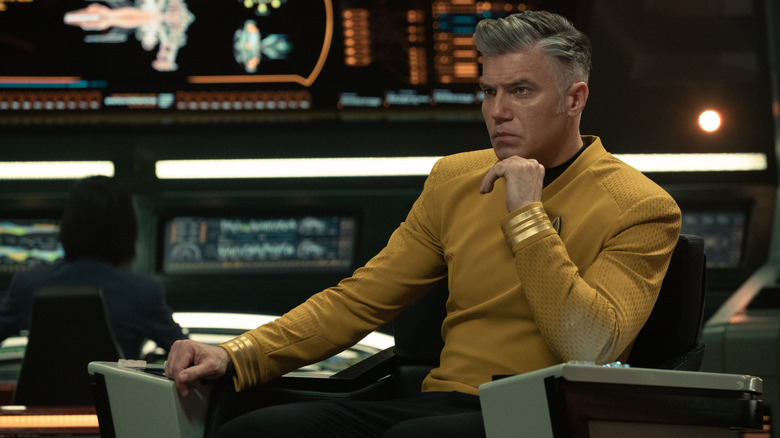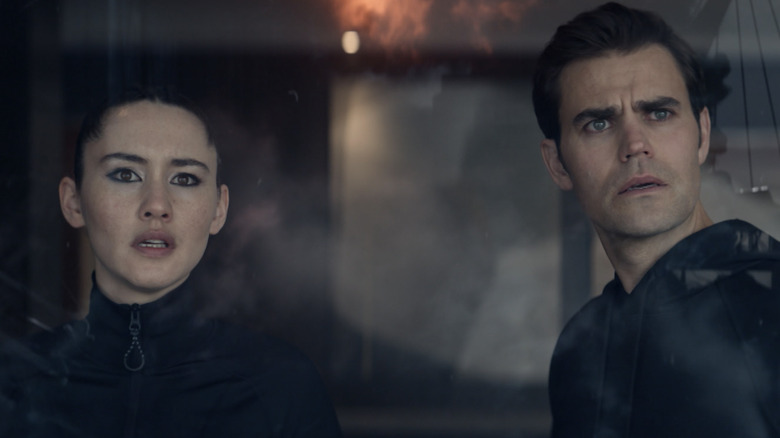How Strange New Worlds' Writers Define Star Trek 'Canon'
"Star Trek: Strange New Worlds" is a prequel, which means that by definition it operates under storytelling constraints. The season 1 finale, "A Quality of Mercy," re-enacted the classic "Original Series" episode "Balance of Terror," all to show why things must proceed as the audience knows they do.
We've talked before about how "Strange New Worlds" uses a loose approach to canon, but even if the minor details don't always add up, the bigger picture ones have to. According to co-creator/showrunner Akiva Goldsman, the "Strange New Worlds" writers' room isn't just winging it when it comes to canon either. Speaking to Collider, Goldsman and his show-running partner Henry Alonso Myers defined their own take on "Trek" canon.
Asked if they consider "Star Trek" comics or novels canon, Goldsman gave a firm, "No." "Unless it's appeared on screen, it's technically not canon, it's secondary reference material," Goldsman explained. This makes sense since "Star Trek" is primarily a television and film franchise. Few people except Trekkies will ever read tie-in literature, so why keep yourself and your story bound to it?
Goldman added that this "onscreen" definition of canon means that "Star Trek: The Animated Series" is canon and could be considered seasons 4 and 5 of "The Original Series." This is a marked change from previous uncertainty about whether that series "counts." What did Myers have to add?
The frustrations of canon
Myers stressed that "Strange New Worlds" is a show meant to be enjoyed by "Trek" die-hards and newcomers alike. "We really don't want to alienate," Myers said, and that approach is plenty evident onscreen. As for how this affects characters with locked-in fates, he explained:
"Yes, we know where they're gonna go; yes, we have an idea because we've been told where they come from, but the characters don't know where they're gonna go, and so that's how we approach them. We approach them like they're real people who are experiencing actual emotional moments that we wanna see."
Basically, it's the journey, not the destination. Myers specifically says that when writing for James Kirk (Paul Wesley), the focus is always on who Kirk is now, not the man he'll become. That means Wesley's acting material is always "in the moment," not recitations of old beats.
However, I think Myers inadvertently reveals why canon can be frustrating. Knowing Captain Pike's (Anson Mount) ultimate fate adds a sour taste to his weekly adventures in "Strange New Worlds," one that's hard to dislodge — especially since the show keeps reminding us of it. The same goes for Spock (Ethan Peck) and Nurse Chapel's (Jess Bush) budding romance; we know it won't work out since they're not together in "The Original Series."
Part of me wishes that "Strange New Worlds" would drop the prequel framing and embrace being an alternate retelling of these characters. That would free up possibilities for storytelling and emotional investment. Plus, "Star Trek" is no stranger to alternate timelines; look at the 2009 "Star Trek" film. I don't foresee this happening though. So, we'll just have to pretend we don't know the ending and live in the moment as the characters do.
"Star Trek: Strange New Worlds" is streaming on Paramount+.

